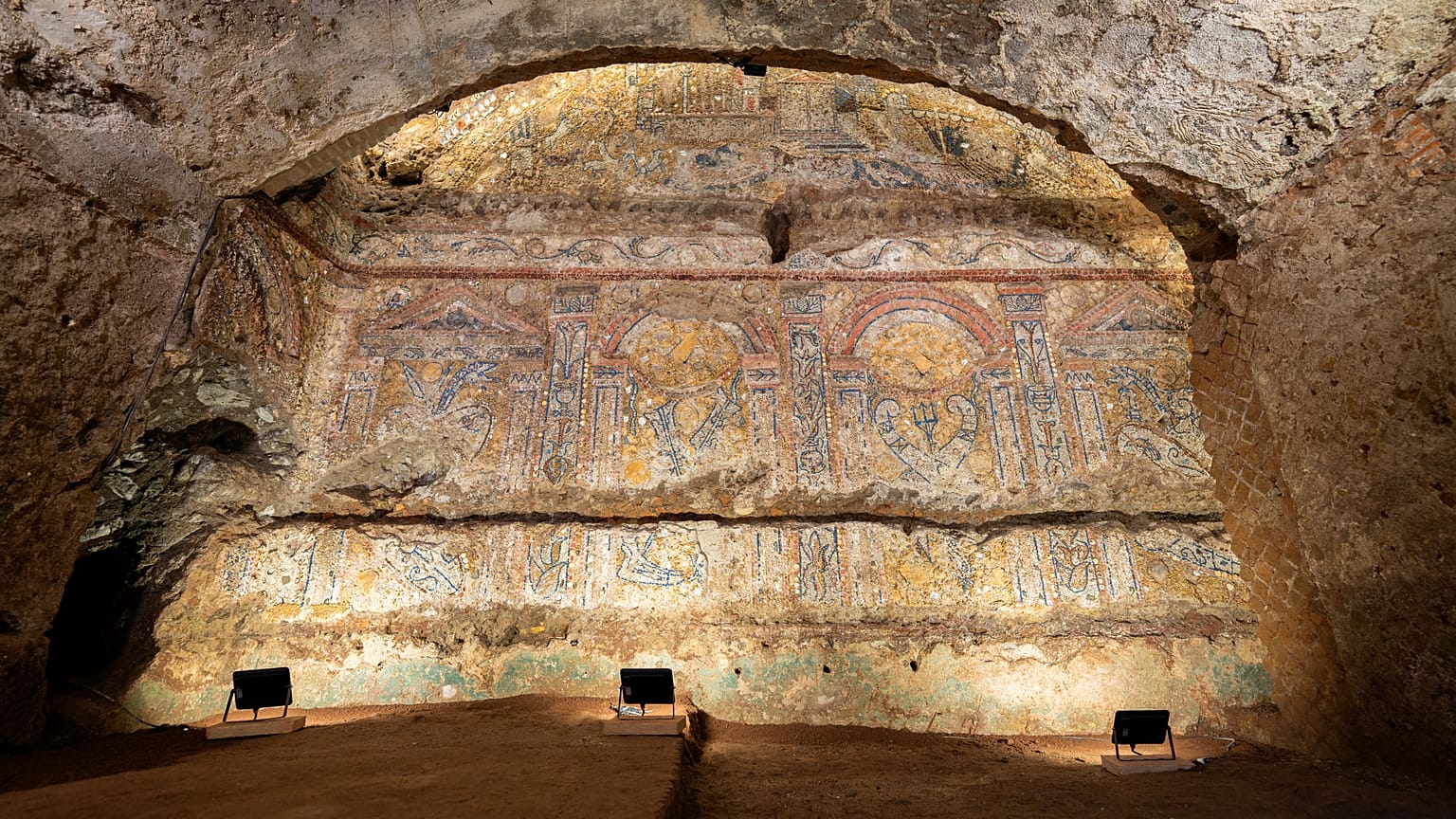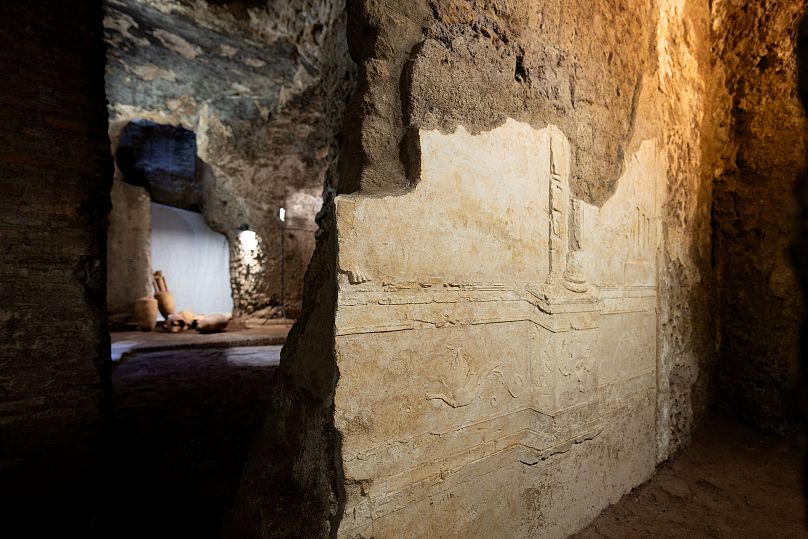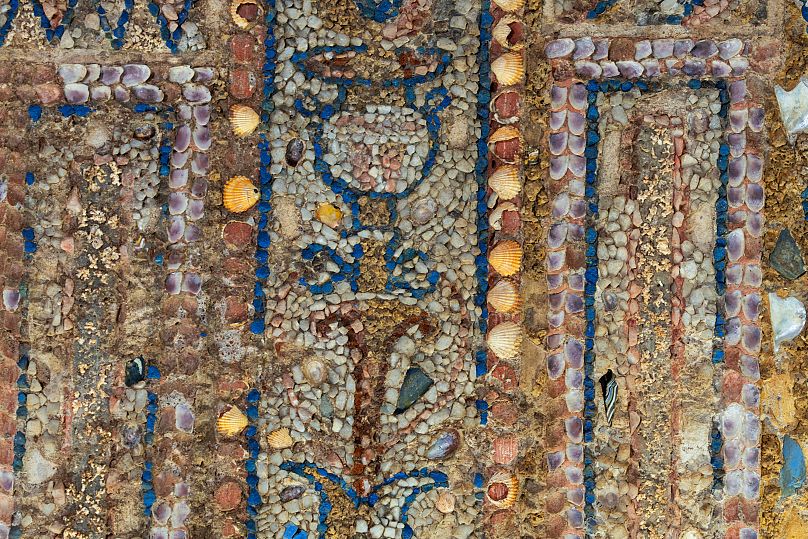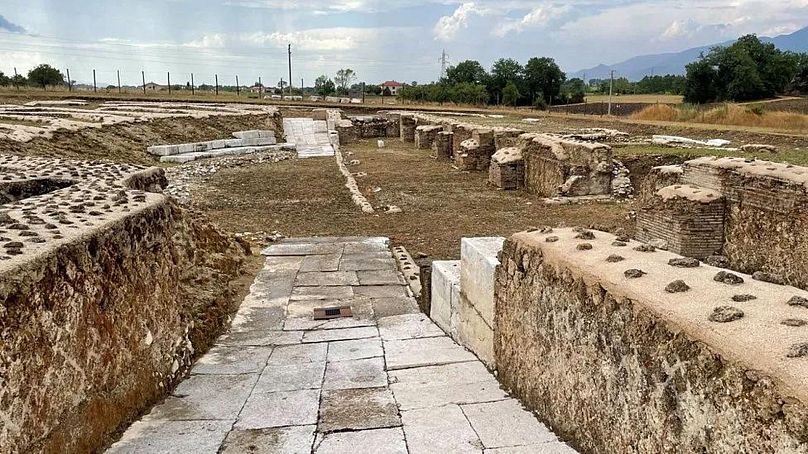The Italian Culture Ministry describes the more than 2,000-year-old Roman domus as a true "authentic treasure."
Italian archaeologists have recently unearthed a stunning, one-of-a-kind Roman dwelling, boasting an "unparalleled" mosaic featuring shells, marble and precious glass, near the iconic Colosseum in Rome.
The luxurious residence, dating back to the latter half of the 2nd century BC to the conclusion of the 1st century BC, has been described by Culture Minister Gennaro Sangiuliano as an "authentic treasure."
Three large ships ride waves in the mosaic towards a coastal city, its walls dotted with small towers and porticoes in a scene suggesting the owner of the more than 2,000-year-old home, or domus, had been victorious in battle.
Brought to light after archaeologists discovered a series of walls in 2018, the domus is spread over several floors. So far only some rooms have been excavated, and the dig will continue well into 2024.
The heart of the domus
Set around an atrium, the domus' main room is a banquet hall styled as a grotto, which was used during the summer months, the ministry said.
The owner, a nobleman likely to have been a senator, would have entertained guests with "spectacular water games", thanks to lead pipes set between the decorated walls, it said.
But what "makes the discovery exceptional is... an extraordinary wall covered with a so-called 'rustic' mosaic unparalleled in terms of the chronology and the complexity of the scenes depicted," it added.
A mosaic marvel
The mosaic features an array of shells, Egyptian blue tesserae, precious glass, and fragments of white marble, depicting tridents, warships, and Celtic-style trumpets.
A particularly intriguing aspect of the mosaic is the representation of a coastal city with small towers and porticoes, surrounded by vines and lotus leaves.
This scene, crafted with meticulous attention to detail using travertine rock, is set against a backdrop of three large ships sailing across a sea with raised sails.
"The representation of a coastal city could allude to a warlike conquest by the owner of the domus, belonging to an aristocratic personage, presumably of senatorial rank," the ministry said.
Alfonsina Russo, the head of the Colosseum Archaeological Park, expressed a commitment to make this historical gem accessible to the public.
Other recent Roman discoveries
Elsewhere in the world of archaeological finds, the remains of a roofed theatre, market, and river port have been discovered at the location of a Roman town.
A study led by Cambridge University revealed that Interamna Lirenas, the ancient Roman colony situated in central Italy, was a flourishing town.
Contrary to previous beliefs, evidence at the site indicated that its decline commenced approximately 300 years later than previously estimated.
Through the analysis of excavated pottery, researchers determined that the town in southern Lazio resisted decline until the latter part of the 3rd Century AD.
At its zenith, the settlement, now mostly agricultural fields, would have accommodated around 2,000 people, according to the study.





















